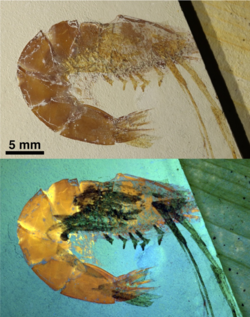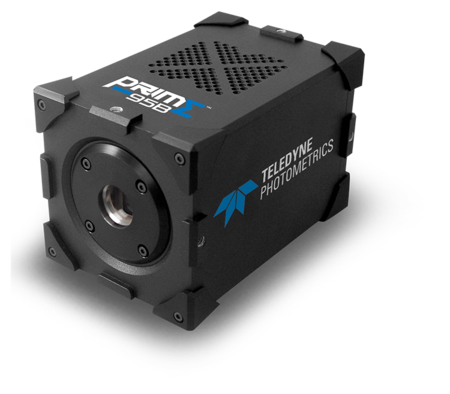Paleoluminescence
Dr. Pierre Gueriau, SNSF postdoctoral researcher
Anom Lab, Institute of Earth Sciences, University of Lausanne
Background
Paleontologists such as Dr. Pierre Gueriau rely on the accurate observation and interpretation of fossil anatomy in order to elucidate the origin and evolutionary history of life. For this process, imaging techniques are absolutely essential, whether it is simply illustrating findings using optical photography/microscopy, or extracting information hidden to the human eye using advanced methods. The advent of x-ray computed microtomography (µCT) has revolutionized the field for 3D preserved fossils. In turn, photography under UV light or blue/green wavelengths has revealed a wide range of details completely invisible under visible light in flat fossils.

Figure 1: Images of a ~150-million-year-old shrimp fossil from Solnhofen Plattenkalk,
Germany.The top image shows an optical photograph,while the bottom shows a false-color
composite image composed of UV luminescence and reflection,revealing many parts faked with
paint (black). Image was taken with a Prime 95B 25mm coupled to a multispectral macro lens.
Challenge
Luminescent signals can be extremely faint, requiring long (up to several minutes) acquisition times. Rather than bioluminescence, Dr. Gueriau’s application is closer to paleoluminescence as it focuses on fossils. As Dr. Gueriau mentions, There are other visible and near-infrared wavelengths that could provide interesting additional contrasts. Therefore, paleontologists need a camera that is extremely sensitive from the UV to the near IR in order to exploit all possible sources of contrast.
The Prime 95B offers a unique combination of extreme sensitivity, high speed and low noise performance from the UV to the near-infrared.
Dr. Pierre Gueriau
Solution
Dr. Gueriau is now using a Prime 95B 25 mm sCMOS camera. Dr. Gueriau spoke about his experience with the camera: "The Prime 95B 25mm offers a unique combination of extreme sensitivity (up to 95% quantum efficiency), high speed, and low noise performance from the UV-A to the near IR". The Prime 95B 25 mm also provides a large 25 mm field of view, essential for imaging a variety of fossil sizes at high spatial dynamics, revealing particular anatomical details of these fossils.

Learn More About the Prime 95B